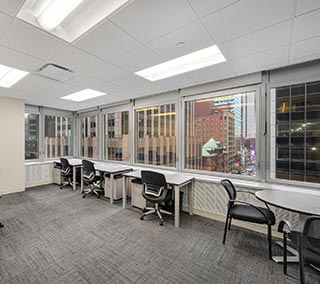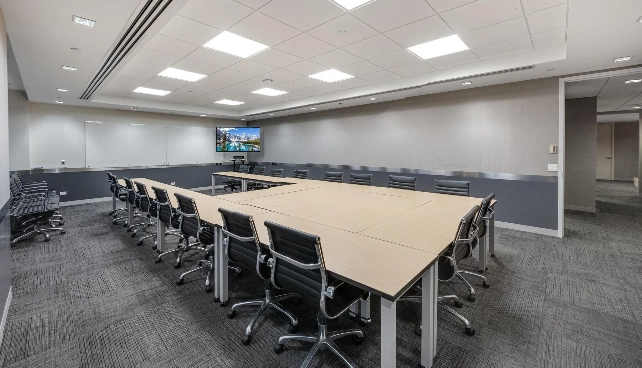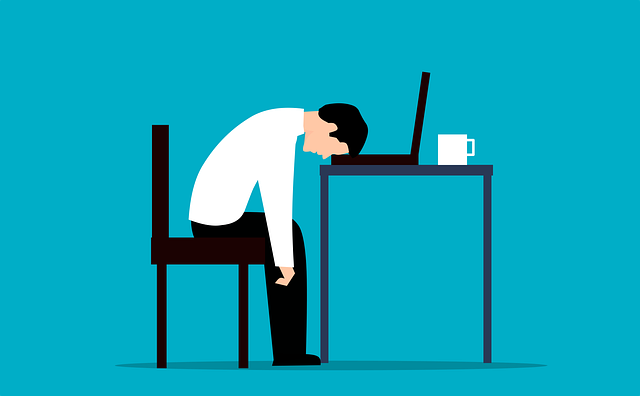The posture you have when you’re sitting is very important in regard to your health. You can adjust your office chair in a number of ways to improve your posture. This includes adjusting the chair’s height, angle, angle of the backrest, backrest height and the armrest height.
Your posture is directly related to your health, which is why it’s important to know how to adjust your office chair for good posture. Spending your days at work sitting in an office chair that provides you with proper comfort and support is imperative. Some people have different needs when it comes to office chair support but making some minor adjustments can also make a big difference in things like lower back pain. From adjusting the height of your chair so your feet are firmly planted on the ground to simply raising or lowering your armrests, there are ways you can be more comfortable throughout the course of a workday.
How Can You Adjust Your Office Chair for Perfect Posture?
Sitting in an uncomfortable office chair can lead to a host of health problems, including back pain. If investing in a new office chair isn’t in the budget, there are some adjustments that you can make to provide your body with more support.
- Adjust the height of your desk chair so your elbows rest on the arms of your chair while bending at a 90-degree angle. Your hands should comfortably fall at your desk in front of you.
- Your legs should be able to fit under your desk without pressing up against the underside of your desk. Your knees should be situated at a 90-degree angle as well. This position will alleviate pressure on your back.
- The lower portion of your backrest should rest up against your lower back. To do so, this area of the chair should be slightly arched to prevent you from slouching. If your chair doesn’t provide you with enough lower back support, you can purchase lumbar support pillows for office use.
- When you are sitting in your office chair facing forward, your eyes should be able to see your computer screen directly in front of you. You shouldn’t have to glance up or down in order to see what’s in front of you.
Adjusting the Height of Your Chair for Posture
The height of your chair is important for your back, knees, legs, arms, etc. Find the lever on your office chair that adjusts the height. Make sure you’re sitting in the chair when you make the adjustments. Choose your chair height so your elbows and arms stretch out right to the height of the desk. If your chair also has adjustable armrests, take advantage of the opportunity to adjust both of these settings.
Your Feet Should Always Be Firmly on the Floor
When you’re sitting in your chair, your feet should be flat on the ground in order to keep your body stabilized and comfortable. This will also help to keep your back straight, which prevents lower back pain.
If you aren’t very tall, you may have trouble finding an appropriate position for your feet that’s also adequate for the rest of your body. If you can’t quite reach the floor, utilize a footrest. A footrest is designed to keep your feet at a safe elevation while supporting your knees and legs.
How to Adjust the Angle of Your Office Chair
You need to sit on your office chair when you want to adjust its angle. Locate the adjustment knob on the chair. It’s usually underneath the seat or behind the back. Push down on the knob until you’re able to adjust your chair to the angle that makes you feel most comfortable. You’ll need to lean back or sit forward accordingly.
Does Your Seat Depth Matter?
A chair that supports proper posture will provide you with a seat depth that accommodates your body type. If you don’t have enough depth to your chair, you won’t have enough support for your legs and back. A seat that is too deep can put pressure on your legs. You may also be prone to leaning back and reclining too much. This can lead to neck, back and shoulder pain.
Adjusting the Angle of Your Backrest
Before adjusting the angle of your backrest, determine the height of your workstation. Make sure it’s at a height that works with the height of your body. Most workstations can be adjusted. Sit down in your chair and assess where your elbows are located. They should be comfortably on your chair at a ninety-degree angle. Plant your feet firmly on the floor and adjust your knees so they are slightly spaced apart. Adjust the height of your backrest so you feel the lumbar support in the lower area of your back.
You can now adjust the angle of your backrest. The angle should be in a spot where you feel like you have back support when you’re sitting straight up with good posture. If you have to lean back or move your body forward to get comfortable, then you need to adjust the angle more.
A knob should be located on your backrest. Unlock the component, and lean forwards or backwards to adjust your angle. Make sure you’re looking at your monitor the entire time to ensure that you’re not moving your chair to a worse position. Keep in mind, not all chairs allow you to adjust the angle of the backrest.
The Importance of Backrest Height for Posture
While your backrest isn’t the only part of your chair that provides you with support, it’s definitely an important component. The backrest height should be high enough that your shoulders and neck aren’t strained. It should also reach low enough that you have lower back support.
Not all chairs will come with an adjustable backrest, but it’s a great feature to have. This allows you to move your chair into a position that is ergonomically supportive for your back, neck, etc.
Adjusting Your Armrest Height to Better Your Posture
Your arms may be an afterthought when it comes to your office chair, but their position is actually really important. You could have every other part of your body in a proper position, but your arms being too high or too low can end up causing a lot of pain and strain in your neck and shoulders. Your arms should always be able to sit comfortably on your arm rests (ditch a chair that doesn’t have arm rests!) with your elbows bent at ninety degrees. Your wrists will reach onto your desk where your keyboard sits. You shouldn’t have to hover your arms or wrists or have them bending downwards because your chair height is too high.
How to Adjust Your Office Chair for Better Lumbar Support
Lumbar support is incredibly important when you’re talking about proper posture. Providing that small area in your lower back with support will cause the rest of your body to sit in a position where alignment of the spine is optimal. If you don’t have enough support in the lumbar region of your chair, you will tend to slouch forward or scoot your butt forward so you’re lounging back too much.
Hopefully your office chair provides you with adjustable lumbar support. If it doesn’t see if you can invest in a separate lumbar support pillow that can be put onto any chair you’re sitting on. This is a nice item to have if you are moving from workspace to workspace over the course of a day. You can take your pillow with you.
Why You Should Place Your Computer Screen at Eye Level
When your posture is appropriate, your eyes will be focused on your computer at a comfortable angle. Most of us are sitting at our computers for hours each day. If we are forcing our eyes to look at things at an unnatural angle, this will lead to issues like eye strain and headaches.
Always make sure that your computer screen is located at eye level. You may need to adjust the height of your chair or the angle at which you are sitting, but don’t look at your computer when it’s higher than your eye level or below it.
Factors to Consider When Choosing a New Office Chair
If you’re trying to adjust your office chair only to find out that it doesn’t provide you with the option of adjusting things like angle, height and arm height, it might be time to invest in a new chair. There are a lot of different office chairs on the market. Look for something that has a lot of different adjustable features. Even if the chair isn’t comfortable for you right out of the box, those changes can be made to accommodate your body type.
Your Objects Should Be Easy to Reach from Your Spot
When you’re sitting at your desk, there will objects around you that you will have to reach for over the next number of hours. Your posture and office chair position will determine how easy and comfortable it is for you to reach for these things. Maybe it’s your water bottle, pen, stapler, folder or phone. You should be able to remain in your position, simply reaching out with your hand to grab what you need.
Depending on the size of your desk and how many items you use to get your job done, you may not be able to situate everything right within your reach. Keep items that are commonly used right near you. Other items can be kept in drawers or in different spots of your desk. Still, you should be able to roll or pivot your chair to grab your items without having to slouch or overextend.
How Do I Choose a New Office Chair?
Choosing a new office chair isn’t necessarily a simple process, as there are many different features to consider. Before you start shopping, you should learn all that you can about the different adjustable options that are beneficial to have in a new chair.
Once you start the search for a new chair, think about what your budget is. Be willing to spend a decent amount of money on your chair. After all, this is where you’ll be sitting for many hours per day. If it’s not comfortable and providing you with ample support, you can develop a number of health issues. Your company may be willing to purchase a chair for you if you need additional support. If you deal with back pain or posture issues, a doctor may be able to write you a script that would require your employer to invest in your health and wellbeing.
Questions
Does the Height of Your Desk Chair Matter for Posture?
The height that you have your desk chair set will determine your posture while you’re sitting at your desk. If you’re sitting too low underneath your desk, your arms will need to reach up to the desk’s surface. You may also find yourself leaning forward or stretching your body up to the desk.
How Can I Tell If My Desk Chair Isn’t Positioned Properly?
After a number of hours at work, you may find that your neck and back are starting to feel sore or tight. After a number of weeks of sitting in the wrong position, you can start to develop headaches. Take some time to really look at how you’re sitting and where you might be going wrong with your posture. You can make changes accordingly.
Does My Chair Need an Arm Rest?
It’s absolutely necessary for a desk chair to have armrests if you want to have proper posture. If your arms are expected to hold themselves up for hours each day or they’re sitting at an odd angle, you would be shocked to see how bad this is for your body. Comfortable armrests are just as important as lumbar support and the height of your chair.
Adjusting Your Office Chair to Improve Lower Back Pain
Lower back pain can be a debilitating condition to deal with. Your pain may be attributed to poor posture all day long, or you might have an injury or health issue that is contributing to your discomfort. Whatever the source of your pain, you need to adjust your office chair in a way that improves your lower back pain while preventing more problems.






